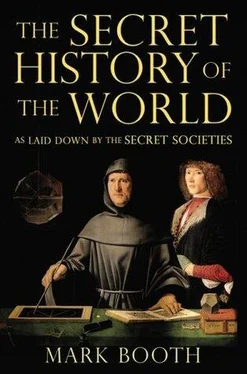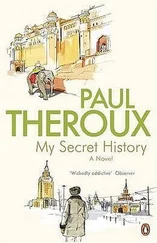In the Middle Ages no such distinction would have been practical. Rituals were performed under the aegis of the Church to try to ensure, for example, good crops or success in a duel. Consecrated bread was seen as a cure for the sick and a preservative against the plague, amulets giving protection against lightning and drowning were made out of church candles. Scraps of paper bearing magical formulae were inserted into roofs as protection against fire. Church bells could ward off thunder and demons. Formal curses were pronounced to drive away caterpillars. Holy water was scattered on the fields to ensure a good harvest. Holy relics were wonder-working fetishes. Baptism could restore sight to blind children and overnight vigils at the shrines of saints would bring vivid visionary dreams and cures in the tradition of the ‘temple sleep’ advocated by Asclepius.
Later Christian apologists tried to distinguish between legitimate Church practice, a matter of petitioning high-level spiritual beings who might choose to agree to a request or not, and magic conceived as a mechanical process involving the manipulating of occult forces. But this involves a misunderstanding. Magic is also an uncertain process of invoking spirits, including some spirits of very high levels.
In the Middle Ages everyone believed in these spiritual hierarchies. Underlying all Church practice and lay spiritual practice was a belief that repeating a formula such as a prayer or performing a ceremony had the power to influence material events for good or ill. By means of these activities people believed that they could communicate with the orders of disembodied beings who controlled the material world.
That prayer was efficacious, that providence rewarded the good and punished the bad was then the universal belief and the universal experience.
If history was seen unquestioningly as a providential process, it was not in a fatalistic way. God had a plan for humankind that different orders of disembodied beings and different orders of incarnated beings were helping to unfold, a plan encoded in the Bible and elucidated by prophets.
But it was a plan that might go wrong at any time.
FRIDAY THE THIRTEENTH IS STILL remembered as an evil day. On Friday 13 October 1307 the kings of the world finally moved to try to eradicate the esoteric influences they feared had been growing further and further from their control.
Just before dawn the seneschals of France, acting on the orders of the French king, Philip the Fair, descended on the temples and lodgings of the Templars, arresting some 15,000 people. In the Paris Temple, France’s great centre of finance, they found a secret chamber containing a skull, two thigh bones and a white burial shroud — which is, of course, what you will find if you break into a Freemasonic temple today.
Only a few of the knights — from La Rochelle on the Atlantic coast — managed to escape. They fled to Scotland, where they lived under the protection of the rebel king, Robert the Bruce.
The Inquisition accused the captured knights of making novices spit and trample on the cross of Christ. They were accused, too, of sodomy and worshipping a goat-headed idol called Baphomet. They confessed to seeing this idol with a long beard, sparkling eyes and four feet. Under pressure from Philip the Fair, Pope Clement published a Bill of Abolition, putting an end to the Knights Templar. All their assets were seized by the monarchy.
Appearing before a papal commission the knights said they had been tortured to make them confess. One Bernard de Vardo produced a wooden box in which he kept the charred bones that had fallen from his feet as they were roasted over a fire.
What was the truth behind their confessions?
Shortly before he died I was privileged to work with Hugh Schonfield, the great scholar of the Dead Sea Scrolls. Schonfield did much to explain to Christian scholars Jewish roots of the New Testament that had hitherto been overlooked or misunderstood. Schonfield knew of the ATBASH cipher, in which the first letter of an alphabet is substituted for the last, second for the second last and so on. He also knew that this cipher had been used to encrypt messages in the Book of Jeremiah and in some of the Dead Sea Scrolls. Instinct led him to try it out on the word Baphomet. In this way he found coded in the word Baphomet the word ‘wisdom’.
The personification of wisdom that Templars confessed to communing with was, however, the goat-headed god of worldly wisdom. Since the time of Zarathustra initiation ceremonies had induced in the candidate altered states in which he underwent terrifying ordeals, was attacked by demons and so prepared to overcome the worst that life — and life after death — had to offer. Now the cunning torturers of the Inquisition were able to cause their victims such pain that they re-entered an altered state of consciousness, and it was then that the demon-king Baphomet appeared to them again, this time in triumph.
They were indeed facing the worst that life and death had to offer.
19. FOOLS FOR LOVE
Dante, the Troubadors and Falling in Love for the First Time • Raphael, Leonardo and the Magi of Renaissance Italy • Joan of Arc • Rabelais and the Way of the Fool
IN 1274 IN FLORENCE A YOUTHFUL DANTE first saw the beautiful Beatrice.
It was love at first sight.
It was also the first time anyone fell in love at first sight.
In the annals of the secret societies this is a great and important historical truth. In conventional history people have been falling in love and been romantically in love since the dawn of time. It’s part of our biological make-up, they say. The odes of Pindar and Sappho are expressions of romantic love.
In the secret history, though, these odes from ancient Greece are read as being narrowly sexual. They do not exhibit the moon-calf pain of separation, the ecstatic delight in the beloved’s appearance and the interlocked gaze which characterize being in love today.
Dante wrote of his first sight: ‘She was wearing a beautiful, delicate crimson robe tied with a belt and the moment I saw her I say in all truth that the spirit that loves in the innermost depths of my heart began to tremble in such a way that it overtook my whole being… the beginning and end of my life’s happiness had been revealed to me.’ He said he became wholly absorbed in the love in her eyes. Later he wrote of her that when he first saw her he thought by some miracle an angel had materialized on earth. It would be wrong to read this in terms of poetic convention.
In the Commedia he described the sensation of being wholly absorbed in her eyes and says that the erotic charge he took from them led him to Paradise. Again, this is no mere poetic fancy. The erotic and the mystical intertwined in a way that was new in the West.
Dante and Beatrice would both marry other people, and she died young. What today we think of as romantic love with its mystical yearnings and sense of destiny — the feeling that this was meant to be — all derives from the mystic ferment of Islam. Just as the characteristically Christian understanding of love of your neighbour freely given can be seen to have grown out of the Hebrew prophets’ concept of grace, so now the modern world’s understanding of the sacred was illumined by the altered states of consciousness achieved by Sufi mystics such as Ibn Arabi. His revolutionary The Interpretation of Longing expressed sexual love in terms of divine love. The Sufis expressed a feeling never felt before and so creating the conditions for everyone else to feel it.
For over a thousand years the erotic instinct had been repressed. Sexual energies had been channelled into the development of the human intellect. By the time of Aquinas and Bacon this development was complete. Devised in overnight vigils kneeling at the altar, Aquinas’s Summa Theologica is more than two million words of densely packed syllogisms, testimony to a capacity for unrelenting intellectual focus that today’s greatest philosophers would find it hard to match.
Читать дальше












